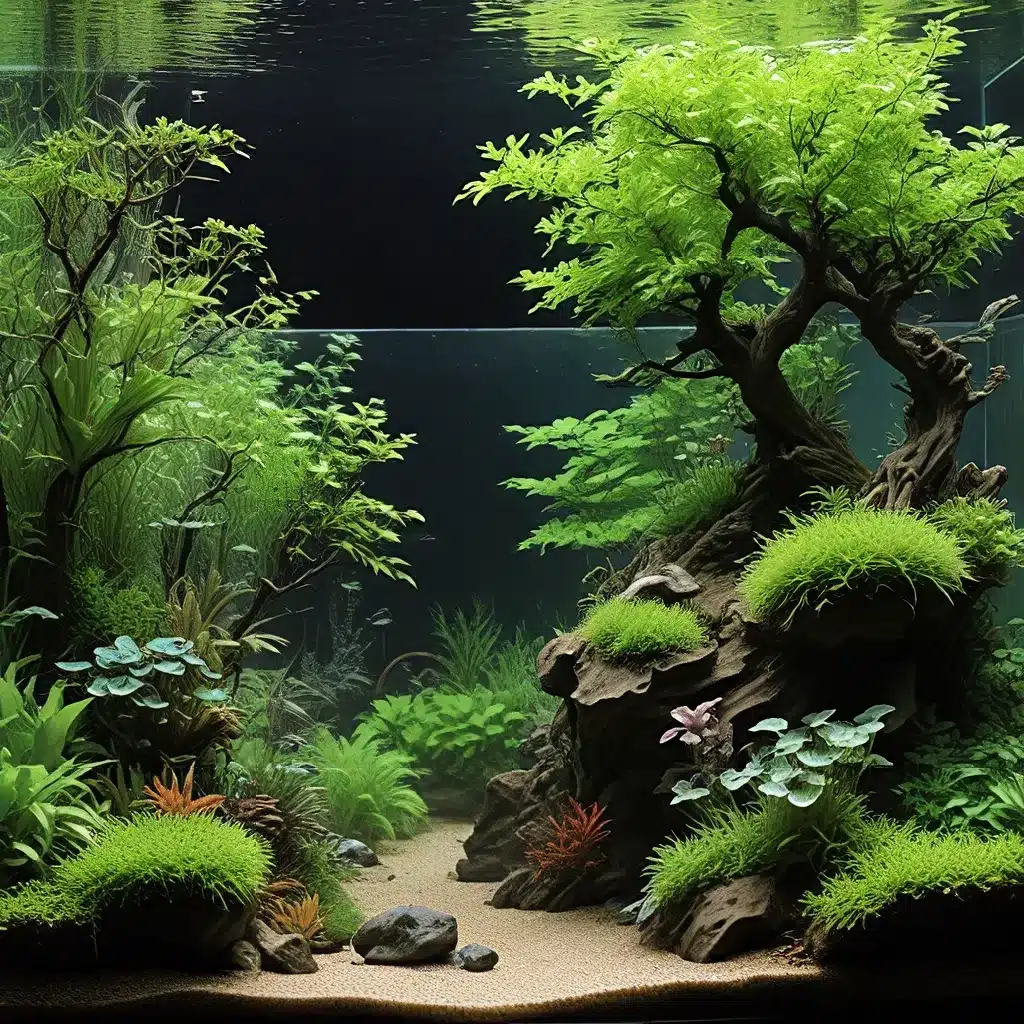
In the captivating world of aquascaping, the art of creating visually stunning underwater landscapes, attention to detail and a well-conceived plan are the keys to unlocking true aquatic elegance. Whether you’re a seasoned aquarium enthusiast or a passionate newcomer, mastering the principles of aquascaping can transform your aquarium into a mesmerizing focal point that showcases the natural beauty of aquatic life.
Laying the Foundation: Understanding Aquascaping Fundamentals
Aquascaping is a multifaceted discipline that encompasses the strategic placement of plants, rocks, driftwood, and other aquatic elements to create a harmonious and aesthetically pleasing underwater environment. At its core, successful aquascaping is about more than just arranging decorative items; it’s about cultivating a balanced ecosystem that caters to the specific needs of the inhabitants while captivating the viewer’s eye.
One of the crucial aspects of aquascaping is the selection of appropriate plant species. Aquatic plants not only contribute to the visual appeal of the aquarium but also play a vital role in maintaining water quality and providing essential habitats for fish and invertebrates. When choosing plants, it’s important to consider their growth patterns, light requirements, and compatibility with the chosen aquarium inhabitants.
Mastering the Art of Aquascaping Design
Effective aquascaping design is all about creating a sense of balance, depth, and visual interest within the confines of the aquarium. One of the foundational principles is the use of the “Golden Ratio,” a mathematical concept that has long been revered for its ability to produce aesthetically pleasing compositions.
By incorporating the Golden Ratio into your aquascaping layout, you can achieve a natural, harmonious flow that draws the viewer’s eye through the aquarium’s various elements. This can be accomplished by strategically placing larger focal points, such as driftwood or rock formations, along the intersecting lines of the Golden Ratio, and then arranging smaller plants and decorative pieces to complement the overall design.
Another crucial aspect of aquascaping design is the creation of depth and perspective. This can be achieved by using a technique known as “layering,” where you arrange plants and decor at different heights and depths to create the illusion of a three-dimensional landscape. By carefully considering the placement and growth habits of your aquatic plants, you can sculpt a visually compelling underwater scene that captivates the viewer.
Maintaining Water Quality: The Foundation of Aquascaping Success
Alongside the artistic aspects of aquascaping, the health and well-being of the aquarium inhabitants are of paramount importance. Achieving and maintaining optimal water quality is the foundation upon which a thriving, visually stunning aquascape is built.
Establishing an appropriate filtration system, monitoring water parameters, and regularly performing water changes are essential steps in ensuring the long-term success of your aquascaping endeavors. By staying vigilant and proactively addressing any water quality issues, you can create an environment that supports the growth and vitality of your aquatic plants, fish, and invertebrates, ultimately enhancing the overall aesthetic appeal of your aquarium.
Bringing Your Vision to Life: Practical Aquascaping Techniques
With a solid understanding of the fundamental principles of aquascaping, it’s time to put your knowledge into practice and bring your vision to life. One of the most crucial techniques in aquascaping is the strategic placement of hardscaping elements, such as rocks, driftwood, and other decorative items.
By carefully arranging these elements, you can create a sense of depth and interest, as well as provide valuable hiding spots and territories for your aquarium inhabitants. Additionally, the use of aquascaping tools, such as tweezers and planting sticks, can greatly facilitate the precise placement of plants and ensure their optimal growth and integration into the overall design.
Another essential technique in aquascaping is the management of aquatic plant growth. Regularly trimming and pruning your plants can help maintain the desired shape and size, preventing overgrowth and ensuring the overall harmony of your aquascape. Additionally, understanding the specific lighting and nutrient requirements of your chosen plant species can greatly contribute to their healthy development and the overall aesthetic of your aquarium.
Embracing the Journey: Continuous Refinement and Inspiration
Achieving aquascaping excellence is not a one-time endeavor; it’s a continuous journey of refinement, experimentation, and inspiration. As you delve deeper into the world of aquascaping, you’ll find that each aquarium presents its own unique challenges and opportunities for growth and improvement.
One of the joys of aquascaping is the opportunity to draw inspiration from the work of other talented hobbyists and aquarium professionals. By exploring the online galleries and forums dedicated to aquascaping, you can find countless examples of stunning underwater landscapes that can serve as a source of inspiration for your own creations. Additionally, attending local aquarium clubs or participating in aquascaping competitions can expose you to new techniques, design trends, and a vibrant community of like-minded enthusiasts.
Remember, the true essence of aquascaping lies not just in the final result, but in the journey of discovery, learning, and creative expression. Embrace the challenges, experiment with new ideas, and never stop refining your skills. With patience, dedication, and a keen eye for detail, you can transform your aquarium into a work of aquatic art that captivates and inspires all who witness it.

